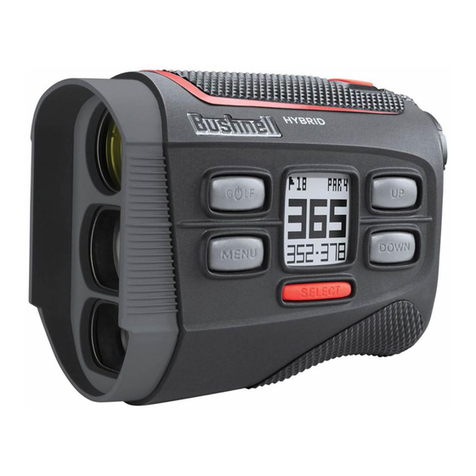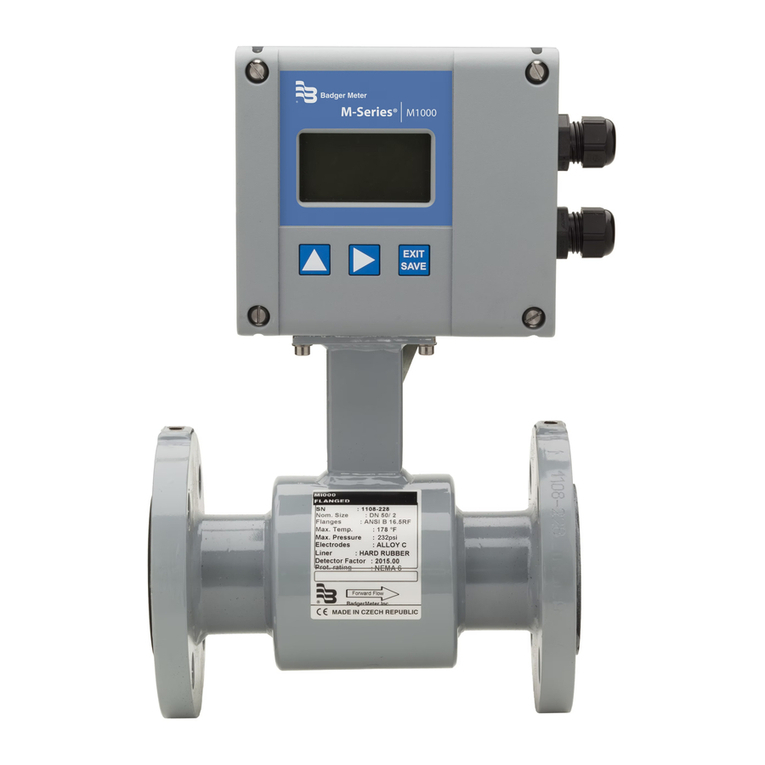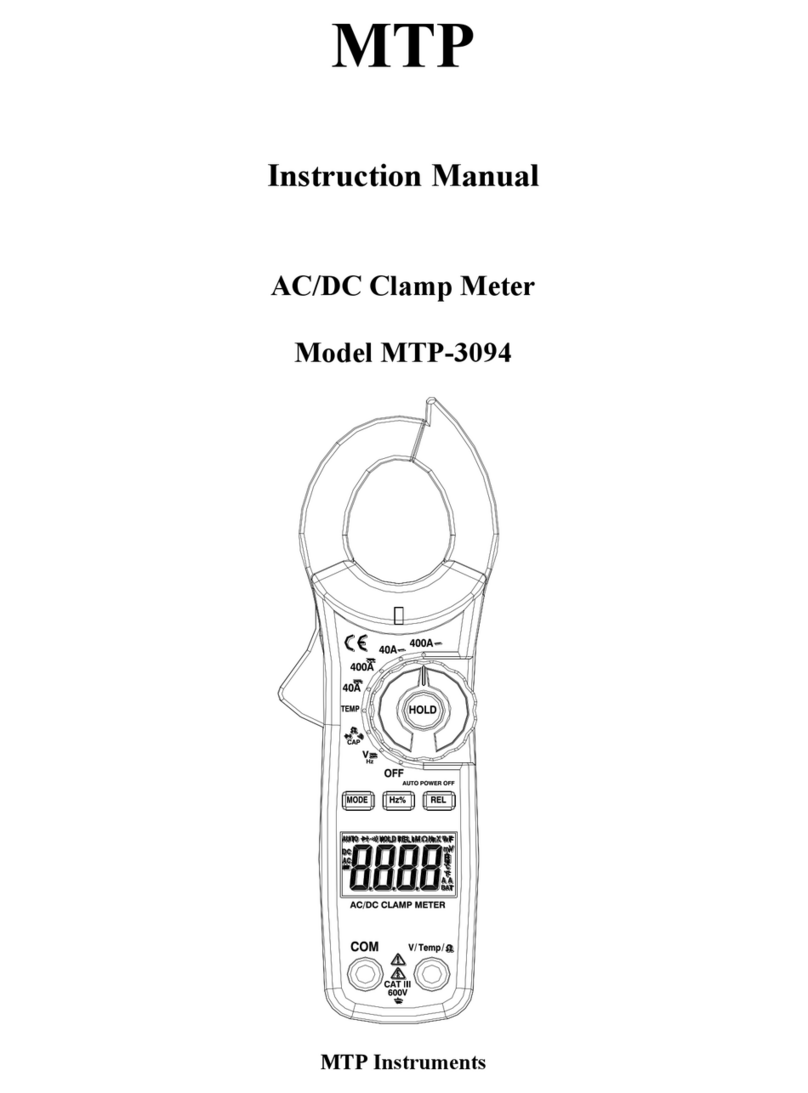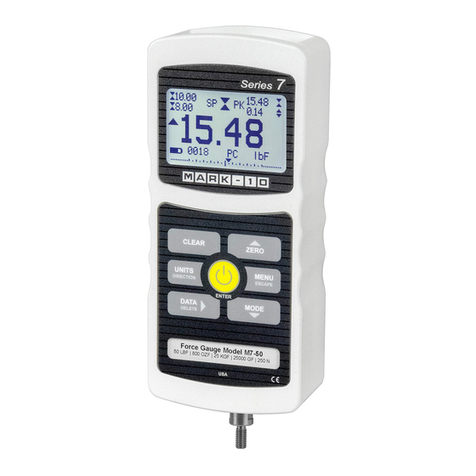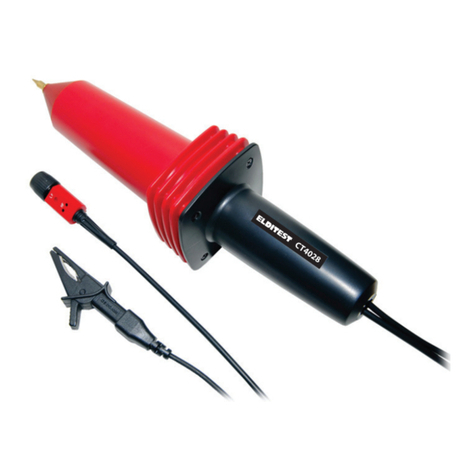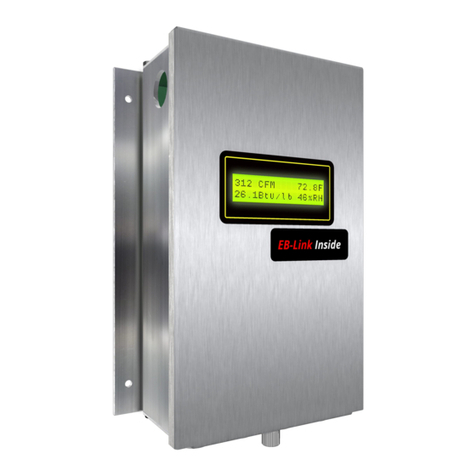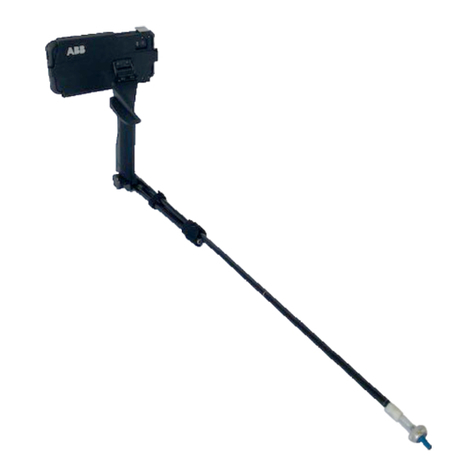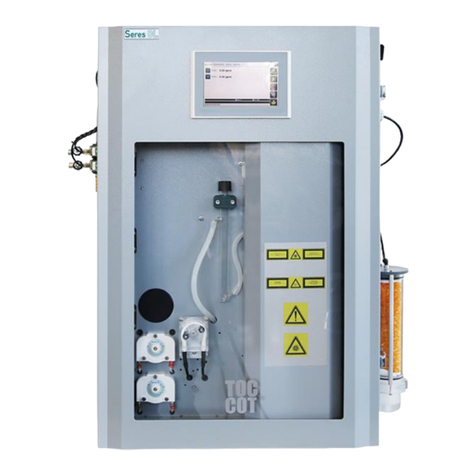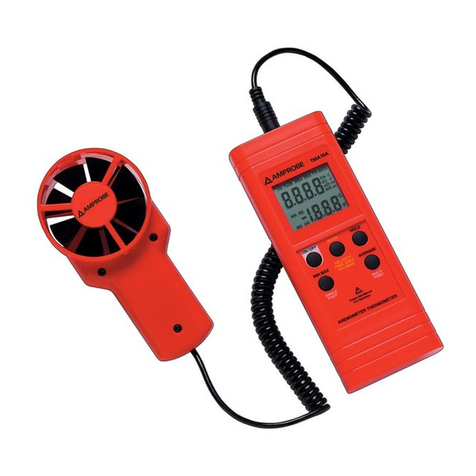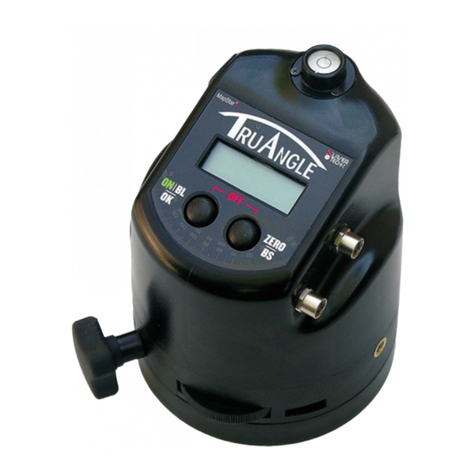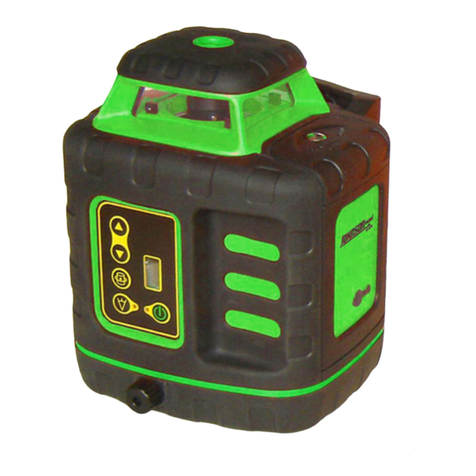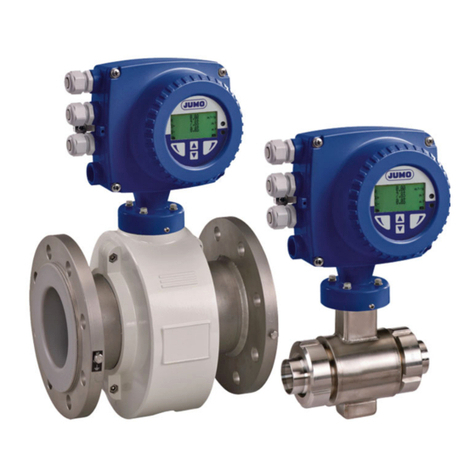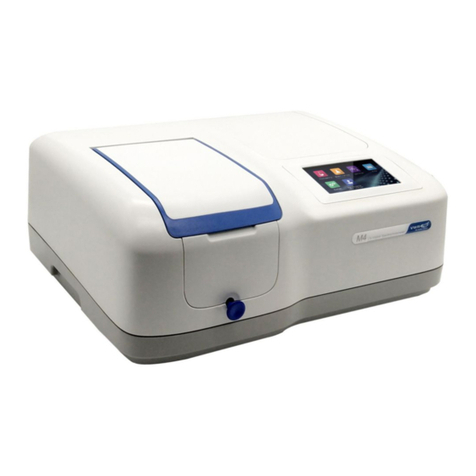gfm Peakanalyzer User manual

www.maschinendiagnose.de
Installation Manual Version 2.6
Peakanalyzer

2Peakanalyzer Installation Manual Version 2.6

Peakanalyzer Installation Manual Version 2.6 3
Content
1General Notes.............................................................................................................5
1.1 Symbols on the device................................................................................................5
1.2 CE-Labeling................................................................................................................5
1.3 Notes to radio interference suppression......................................................................6
1.4 FCC-Note....................................................................................................................6
1.5 Changes .....................................................................................................................7
1.6 Cables ........................................................................................................................7
1.7 Accident Prevention....................................................................................................7
1.8 After unpacking...........................................................................................................7
1.9 Transportation.............................................................................................................7
1.10 Before Installation.......................................................................................................7
1.11 Protected Earth, Shield, Power Supply .......................................................................8
1.12 Accumulator und Battery.............................................................................................8
1.13 Fuses and wire sizes...................................................................................................9
2Installation of hardware.............................................................................................10
2.1 Variants of the Peakanalyzer ....................................................................................10
2.2 Mechanical mounting of the Peakanalyzer................................................................10
2.3 Electrical connection of the Peakanalyzer.................................................................11
2.3.1 Internal connection in the Peakanalyzer....................................................................11
2.3.2 Power supply connection..........................................................................................12
2.3.3 Network connection (LAN) of the Peakanalyzer........................................................12
2.3.4 Connection of IEPE vibration acceleration sensors to terminals of type EL3632.......13
2.3.5 Connection of speed sensors to terminals of type EL5151........................................14
2.3.6 Connection of digital input signals to terminals of type EL1002.................................16
2.3.7 Connection of digital output signals to terminals of type EL2004...............................16
2.3.8 Connection of analog input terminals of type EL3702................................................17
2.3.9 Connection of analog 0-20 mA input terminals of type EL3742.................................17
2.3.10 Connection of PT100 resistor sensors to terminals of type EL3202-0010..................19
2.3.11 Connection of resistance measuring bridges to terminals of type EL3356-0010........19
2.3.12 Connection of a metal particle counter to terminals of type EL1512..........................21
2.3.13 Internal connection of power supply terminals of type EL9410 and EL9505..............22
2.3.14 Supply of external sensors via the terminals of type EL9185.....................................23
2.3.15 Connection of PROFIBUS to terminal of type EL6731-0010......................................23
2.3.16 Connection of PROFINET to terminal of type EL6631-0010......................................24
2.3.17 End cap of type EL9011............................................................................................25
2.3.18 Connection of external sensors via overvoltage protection clamps............................25
2.3.19 Distributed Peakanalyzer terminals in the field..........................................................26
2.4 Mechanical mounting of vibration acceleration sensors.............................................30
2.5 Mechanical installation of displacement sensors.......................................................32
2.6 Installation of speed sensors.....................................................................................33
2.7 Application of strain gauges......................................................................................34
3Software installation..................................................................................................35
4Connection to the Peakanalyzer ...............................................................................36
4.1 Change network settings of the PC...........................................................................36

4Peakanalyzer Installation Manual Version 2.6
4.2 Add Peakanalyzer.....................................................................................................36
4.3 Change network settings of a Peakanalyzer .............................................................38
5Completion of the Installation....................................................................................39

Peakanalyzer Installation Manual Version 2.6 5
1 General Notes
1.1 Symbols on the device
This symbol is a warning of the danger of an electrical stroke. The warning applies
to the 220 V supply voltage connection of the Peakanalyzer in an IP65 box. The
measurement equipment itself does not generate dangerous voltages.
This symbol is a warning of the danger of injury by crush. It is meant the crushing
of fingers during the mounting of the Peakanalyzer with the optional mounting
magnets.
This symbol is a warning of the magnetic field of the optional mounting magnets.
One magnet has a drag force of about 45 kg.
1.2 CE-Labeling
We declare herewith,
GfM Gesellschaft für Maschinendiagnose mbH
Köpenicker Straße 325, Haus 40, D-12555 Berlin,
that our product
peakanalyzer
in all product variations
1
complies to the following relevant regulations:
2
,
3
EG-Niederspannungsrichtlinie 73/ 23/EWG*
(applied in Germany by 1. Verordnung zum Gerätesicherheitsgesetz)
Elektromagnetische Verträglichkeit 89/336/EWG* und 92/31/EWG*
1
This applies to complete measurement systems. For individual components the conformity has to be proven in
the target system. If applied correctly it is not expected to have affects according to device safety or EMV.
2
This conformity declaration applies only the systems supplied by GfM. Changes or extensions are in the respon-
sibility of the operator and thus has to ensure the conformity with the corresponding EG-Directive.
3
Harmonised Norms:
DIN EN 61326:2002 (Produktnorm): Es werden die Störfestigkeits-Prüfanforderungen an Betriebsmittel, die zum
Gebrauch in industriellen Bereichen vorgesehen sind (gemäß EN 61326/A1 Tabelle A1 und Tabelle 3) sowie die
Störaussendungsgrenzwerte (gemäß EN61326/Tab.3) eingehalten.
DIN EN 61000-4-2:2001, -4-3:2001, -4-4:2002, -4-5:2001, -4-6:2001
DIN EN 61010-1:2002
DIN EN 55011:2000 (Funkstörfeldstärke Klasse A)

6Peakanalyzer Installation Manual Version 2.6
(applied in Germany by the EMV-Gesetz)
*) changed by CE-Kennzeichnungsrichtlinie 93/68/EWG
The measurement system is developed and manufactured by the following guidelines:
Sicherheitsbestimmungen für elektrische Mess-, Steuer-, Regel- und Laborgeräte DIN
EN 61 010-1: 2002
It was tested with greatest care before delivery and was shipped in perfect condition.
1.3 Notes to radio interference suppression
The Peakanalyzer fulfills the EMV-policy for unlimited usage in living area and industrial area
in a regular installed state. The Peakanalyzer in an IP65 box must have the door closed when
it is in operational state.
All additional products that are connected to the device must be also suppressed by radio
interference according to BMPT-Vfg. Nr. 1046/84 or Nr. 243/91 or EG-Richtlinie 89/336/EWG.
Products that fulfill the requirement are labeled with a CE-Label or a label describing the
suppression of radio interference by the manufacture.
Products that do not fulfill the requirements can only be used with an individual license of the
BZT.
All signal cables that are connected to the Peakanalyzer must be shielded and the shield must
be connected to protected earth. If the Peakanalyzer is delivered in an IP65 box, the shield of
the signal cables must be connected to the bulkhead receptacle. If the signal cable is directly
connected to the measurementterminal, the shield can alternatively be connected to the clamp
with a black S on yellow ground.
Please consider that all signal inputs and outputs except the power connection is shielded and
must be connected to protected earth on one side. Only in this case a high interference
immunity and interference emission can be achieved.
1.4 FCC-Note
This device has fulfilled all thresholds in tests that are formalized in chapter 15 of the FCC-
Guideline (in 47 CFR 15.105)
4
for digital devices of the class B. These thresholds have
sufficient protection of harmful radiation for the installation in living areas. Devices of this class
generate and use high frequency electromagnetic waves and may emit these. Thus if the
instructions are not realized properly it is possible to disturb the radio reception. However in
exceptional cases certain installations can cause disturbances. If the radio or TV reception is
disturbed and it can be backtracked to the device by switching it off and on it can be corrected
by the following actions:
•Adjust the direction of the receiver
•Increase the distance between the device and the receiver
•Plug in the power connector of the device in another socket so that the device is connected
to a different electrical circuit than the receiver.
4
FCC - United States Federal Communications Commission

Peakanalyzer Installation Manual Version 2.6 7
•If necessary contact our support or contact an experienced radio or TV technician.
1.5 Changes
According to FCC-Guidelines it is not permitted to operate the device with changes that are
not approved by GfM.
1.6 Cables
To fulfill the thresholds of class B devices according to part 15 of the FCC-Guidelines it must
be ensured that all signal cables that are connected to the Peakanalyzer are shielded.
1.7 Accident Prevention
It is confirmed that the delivered product is procured according to accident prevention
regulation "Elektrische Anlagen und Betriebsmittel" (BGV-A3 der Sammlung der Einzel- und
Unfallverhütungsvorschriften der gewerblichen Berufsgenossenschaften in Deutschland)
5
.
This confirmation has only the purpose to release the company of verifying the device before
the first installation (§ 5 Abs. 1, 4 der BGV-A3). Civil warranty and liability claims are not
regulated by this confirmation.
1.8 After unpacking
After unpacking the device it should be checked for mechanical damages or loose parts in the
inner. If a transport damage is occured, contact GfM and do not install the device.
1.9 Transportation
Transport the Peakanalyzer in the original package or in a package that ensures an adequate
protection. Transport damages are excluded from guarantee claims.
1.10 Before Installation
The Peakanalyzer is assembled with different rail components, like the Industry-PC, terminals
and the power supply. These components are mostly assembled in anIP65 steel box. But they
may are also delivered as separate components for installation in a control cabinet.
If the device was carried from a cold environment to the operating area, condensation may
occur. In this situation wait until the temperature adopted to the environment and it is absolutely
dry before putting it in operation. If there is condensation due to transport or storage wait at
least 2 hours for acclimation. It must be ensured that there is no condensation water in the
IP65 steel box. Devices in the IP65 steel box must not be set into direct sunlight.
The rail components are generally intended for usage in clean and dry rooms especially for
installation in control cabinets. They must not operate under conditions with high dust or
humidity in the air, as well as conditions with explosion danger or aggressive chemical
influence.
The operational condition of the rail components is approved for ambient temperatures up to
40°C. They must be installed in a control cabinet in a way to allow free convection. If the
5
Former VBG-4, also see http://www.bgfe.de/pages/gesetze/bgv.htm

8Peakanalyzer Installation Manual Version 2.6
ambient temperature is above 40°C an active cooling via a fan may be required. The amount
of the exceeding temperature depends on the efficiency of the cooling.
1.11 Protected Earth, Shield, Power Supply
The device has to be connected to protected earth to fulfill the thresholds for devices of class
B according to part 15 of the FCC-Guidelines. The same counts as a requirement for the
specified technical data.
The Peakanalyzer in an IP65 steel box (240 VAC / 110VAC) is connected to protected earth via
the PE signal of the power supply connector that is also connected to the ground of the steel
box. A connection of protected earth to the lightning or overvoltage protection is in general not
possible with the PE connection of the power supply. In this case it isrecommended to connect
the steel box or a conductive screw connection with an earthed machine part.
If the rail components are delivered in individual components for assembling in a control
cabinet, the user is responsible for the professional execution of the DC supply and earth
connection.
All connected signal cables to the Peakanalyzer must be shielded and the shield must be
connected to protected earth. Thus the shield must have a galvanic contact with the chassis.
The Peakanalyzer in the IP65 steel box operates with an AC power supply of 110 VAC to 240
VAC at 50/60 Hz. A cable with 3 wires for L, N and PE must be used for the power supply
connection of the Peakanalyzer with IP65 steel box. The connection is done at the power
supply clamp 52 as depicted in the circuit diagram and labeled in the device.
The rail components for assembling in acontrol cabinet are power suppliedwith 24 VDC ± 10%.
The power consumption depends on the amount of used rail components.
1.12 Accumulator und Battery
The system contains a lithium long term battery that does not need any special maintenance
(Type BR2032). The long term battery is accessible behind the protective cover of the industry
PC. An exchange of the battery should be done by the manufacturer or user in the scope of a
system inspection or maintenance. The exchange is recommended every 4 to 7 years
depending on the application.

Peakanalyzer Installation Manual Version 2.6 9
1.13 Fuses and wire sizes
The power supply input of the Peakanalyzer is equipped with a fine wire fuse 2 A T / 250VAC.
The 230 VAC wire must have a size that is suitable for the maximum current of the fine wire
fuse. The breaking capacity of the supplied fine wire fuse has an amount of 1500 A. If the
current is above 1500 A there is a danger of a permanent lighting bow over the contacts of the
fine wire fuse. This can lead to a fire in the power supply unit. Furthermore the fuse body can
be destroyed.
If the Peakanalyzer operates on a 230 VAC voltage where the maximum current between L and
N is limited to 1500 A, this danger is not existent. This is the normal case. If the maximum
current of the 230 VAC voltage input is above 1500 A, the user has to apply an additional fuse
of the electrical circuit to reduce the maximum current to 1500 A or below between N and L
wire.
The 24 VDC supply voltage of the E-Bus supplies the individual terminals with the required
operating voltage to drive the EtherCAT system bus. The current through these input voltage
clamps must be limited to 2 A. If the power supply source has a greater output current than 2
A, each +24V branch of the E-Bus supply must be protected by a 2 A T fine wire fuse. The
fused wire sizes must be designed to at least 3 A current.
The 24 VDC supply voltage of the power contacts for external sensors is available at the clamps
with a black + on red ground and black - on blue ground. These clamps allow a maximum
current of 10 A. If the power supply source delivers more than 10 A, the input source has to be
protected by a separate fuse of 10 A. If the power supply source delivers a current of 10 A or
less, the additional fuse can be omitted. In all cases the wire size must have at least a cross
section of 1.5 mm². In most cases a power supply source with 2.5 A or 3 A is sufficient. This
than serves as fuse for the power contacts.
If there are external sensors used that are not supplied by GfM it is recommended to
additionally protect the + branch by a fine wire fuse. This fuse should have an amount of 3
times of the nominal current but a maximum of 2 A T. An example is shown in Picture 11.

10 Peakanalyzer Installation Manual Version 2.6
2 Installation of hardware
2.1 Variants of the Peakanalyzer
The Peakanalyzer is delivered as a complete device in an IP65 steel box. The steel box exists
with two different dimensions. Alternatively the rail components are delivered as individual
components for assembling in a control cabinet. Furthermore it may be practical to distribute
the measurement terminals in the field in separate boxes. The concrete type depends on the
local requirements and the contractual agreement. The installation of the hardware is
described for the variant as complete device in an IP65 steel box. The installation in a control
cabinet and the distributed systems should be based on this description.
2.2 Mechanical mounting of the Peakanalyzer
The Peakanalyzer should be installed as close as possible to the measurement object. Thus
there is no need for additional signal amplifier or shielding action.
Picture 1: Physical dimensions Peakanalyzer width 300 mm
Picture 2: Physical dimensions Peakanalyzer width 400 mm
The Peakanalyzer should be mounted as vibration free as possible. Besides a fan, the
Peakanalyzer does not contains any moveable parts. However strong, permanent vibrations
can lead to mechanical damages or contact problems.

Peakanalyzer Installation Manual Version 2.6 11
The Peakanalyzer with IP65 steel box can be mounted with 4 angle brackets on a suitable
surface, e.g. a wall. The screws should have a diameter of 6 mm. Depending of the type of the
steel box the holes must match the sizing in Picture 1 or Picture 2.
Alternatively it is possible to mount the Peakanalyzer via magnets. This method is depicted in
the title picture. This method has the danger of injury due to crushed fingers by mounting the
Peakanalyzer. Thus a cautious mounting is recommended.
2.3 Electrical connection of the Peakanalyzer
All signal inputs from sensors or other encoder are lead through the bulkhead receptacle into
the Peakanalyzer IP65 steel box and connected to the intended clamps. The same applies to
the power supply cable,the LAN cable and the cable for the optional PROFIBUS slave terminal
or PROFINET device terminal. If some terminals are distributed in the field (see 0 to 2.3.19.4)
the cable for the EtherCAT branch is also lead through the bulkhead receptacle into the steel
box.
The shield of all signal inputs should be connected in the bulkhead receptacle to the steel box.
If the signal inputs are directly connected to the measurement terminals the shield can
alternatively be connected to the clamp with the black S on yellow ground.
2.3.1 Internal connection in the Peakanalyzer
If the Peakanalyzer is supplied in a steel box, the internal connection is already existent. If the
Peakanalyzer is supplied as individual components for a control cabinet, the internal
connection has to be done in the control cabinet. The internal connection consists of the 100
to 240 VAC power supply connection with the fuse Si1 and the overvoltage protection clamp
KN1 for the 24 VDC power supply source NT1. The power supply source NT1 supplies the
industry PC (IPC) through the clamps 9 and 10 as well as the fan. Dependent on the use case
of the bus terminals it is possible to use one power supply source (NT1) or two (NT1, NT2) to
connect the system supply voltage Us and the supply voltage for external consumers Up. The
power supply source NT1 also supplies the terminals X6, X7 and X8 of type EL9410 if they are
equipped. Also see Picture 4 und Picture 7. If a separate power supply NT2 is equipped, it is
also connected to the power supply terminals X6, X7 and X8 of type EL9410. The Chapters
1.13 and 2.3.13 describe the connection of the terminals EL9410 to the power supply sources
Us and Up and points out important notes for the protection of the input supply.
The failure monitoring of the overvoltage protection clamp KN1 is done via the digital input
terminal DI-01 of type EL1002. The internal connection of the Peakanalyzer is shown in Picture
3.

12 Peakanalyzer Installation Manual Version 2.6
Picture 3: Internal connections in the Peakanalyzer, power supply and LAN connection
2.3.2 Power supply connection
The power supply connection of 100 to 240 VAC is connected on the clamp 52. The clamps are
labeled with blue –N, gray –L and green-yellow –PE. The power supply frequency should be
50 or 60 Hz. The external power supply connection is shown in Picture 3.
2.3.3 Network connection (LAN) of the Peakanalyzer
The network connection of the Peakanalyzer is connected through the RJ45 network socket
X000 via a twisted pair cable to a PC or to a network (see Picture 3). For functional operation
the network interface must be configured appropriate or can be ordered preconfigured (see

Peakanalyzer Installation Manual Version 2.6 13
chapter 4). The communication of the Peakanalyzer Manager with the Peakanalyzer is done
via this connection.
2.3.4 Connection of IEPE vibration acceleration sensors to terminals of type EL3632
The vibration acceleration sensors are directly connected to the terminals with the label 61, 62
to 99. This are in any cases IEPE terminals of the type EL3632 that are suitable for connecting
two vibration acceleration sensors. The supplied vibration acceleration sensors are connected
with the white wire to the clamp labeled with a black + on white ground and with the black wire
to the clamp labeled with a black - on white ground.
Picture 4: Connection of vibration acceleration sensors and speed sensors
Picture 4 shows the direct connection of the shielded connections of the vibration acceleration
sensors to the measurement terminals EL3632. It is shown that the shield is connected to the
clamp labeled with a black S on yellow ground. Alternatively the shield can be connected in
the bulkhead receptacle to the steel box.

14 Peakanalyzer Installation Manual Version 2.6
Picture 5: Connection of external sensors via overvoltage protection to the Peakanalyzer
If the Peakanalyzer is equipped with optional overvoltage protection for external sensors, the
connection of signal inputs is done at the overvoltage protection clamps 11, 12 and following
as shown in Picture 5.
2.3.5 Connection of speed sensors to terminals of type EL5151
The speed sensors are directly connected to the terminals 01, 02, 03 or 04. These are
incremental encoder terminals of the type EL5151.
The output signal of the speed sensor is connected to the clamp labeled with a black C on
white ground. The Peakanalyzer then works with a very accurate impulse time measurement
with an accuracy of 1 ns. This measurement method also results in a very accurate speed
value if there a multiple impulses per rotation and not equidistant distributed. This is the
recommended measurement method. This method works until a maximum impulse frequency
of 1 kHz. Picture 4 shows the connection of two speed sensors to the terminals 01 and 02 in
the impulse time measurement method.
If the maximum impulse frequency is above 1 kHz, the speed signal has to be connected to
the clamp labeled with a black A on white ground.
If the speed signal is given from an incremental encoder that delivers a gray code signal and
additionally the direction of rotation should be measured, the phase shifted tracks A and B
should be connected to the clamps labeled with a black A or B. This is shown on terminal 03
in Picture 4.
The supply voltage for the speed sensors is also provided by these terminals. The clamp with
a black + on red ground delivers +24 V and the clamp with a black - on blue ground provides

Peakanalyzer Installation Manual Version 2.6 15
the ground for the speed sensor. The supplied speed sensors require this supply voltage as
shown in Picture 4.
Further methods for measuring a speed value from a voltage signal or provided speed values
via PROFIBUS or PROFINET are not described in this chapter. For further information see
chapter 2.3.8 –Connection of analog input terminals of type EL3702 or chapter 2.3.15 –
Connection of PROFIBUS to terminal of type EL6731-0010 or chapter 2.3.16 –Connection of
PROFINET to terminal of type EL6631-0010.
If the Peakanalyzer is equipped with optional overvoltage protection clamps, the electrical
connection of the speed sensors is done via the overvoltage protection clamps 19, 20 and
following as shown in Picture 5.

16 Peakanalyzer Installation Manual Version 2.6
2.3.6 Connection of digital input signals to terminals of type EL1002
The digital input terminals are realized with the type EL1002 providing two channels per
terminal. Internally the failure monitoring of the overvoltage protection clamp KN 1 is connected
to the clamp DI-01 (see Picture 3). External digital input signals from a process system can be
connected to the clamps DI-02, DI-03 to DI-16. These signals can be used as trigger signals
to directly start a measurement. Furthermore the digital input signals can be used as process
channels for the classification. The classification can be used as tool to have class dependent
threshold monitoring of online characteristic values of vibration acceleration signals. The
connection of digital input signals is shown in Picture 6.
Picture 6: Connection of digital input and output signals
2.3.7 Connection of digital output signals to terminals of type EL2004
The digital output terminals are realized with the type EL2004 providing four output channels
per terminal. In high state each channel provides an output voltage of 24 VDC with a maximum
current of 500 mA relative to ground. The digital output signals are connected on the clamps
labeled with DO-01, DO-02 up to DO-16. The clamp with a black - on blue ground is the
corresponding ground connection. A digital output can signalize configured characteristic value
or process factor alarms. The connection of digital output signals is shown in Picture 6.

Peakanalyzer Installation Manual Version 2.6 17
2.3.8 Connection of analog input terminals of type EL3702
Picture 7: Connection of analog input terminals of type EL3702
The input terminal of type EL3702 is used to measure external analog input signals. This can
be signals from displacement sensors, process signals or analog speed signals. The channels
can measure voltage inputs in the range -10 VDC to +10 VDC as differential signals. The
differential inputs arelabeled with a black+ and - on white ground. The channel itself is labeled
in the range 11 to 49. Picture 7 shows the connection of displacement sensors and other
possible external analog signals. The circuit also shows that the supply voltage for
displacement sensors is connected to the potential distribution terminal PV01 or the power
supply terminals X6 to X8. A connection to the power supply terminal X9 is not possible since
it does not provide the required supply voltage of 24 VDC.
Note: The clamp labeled with black GND on blue ground is the signal ground for the analog
inputs. These serve not as supply for external consumer or reference potential. They should
not be confused with the clamps labeled with black - on blue ground.
2.3.9 Connection of analog 0-20 mA input terminals of type EL3742
The two channel analog input terminal EL3742 provides the possibility to connect 4-20 mA
sensors. This can be proximity sensors or pressure sensors. Furthermore external analog
signals with 4-20 mA or 0-20 mA can be connected. Commonly these are process factors like

18 Peakanalyzer Installation Manual Version 2.6
power, torque, wind speed, pressure or temperature if provided as (0)4-20 mA signals.
Additionally the input terminal of type EL3742 can be used as speed input.
The current signal inputs are galvanically isolated from the control unit. The signal inputs are
connected to the clamps labeled with black + or - on white ground and are differential inputs.
The label of the measurement channel itself is in the range of 11 to 49. Picture 8 shows the
connection of sensors and other external current signals to the analog input terminal EL3742.
Picture 8: Anschluss von 4-20 mA Sensoren oder von (0)4-20 mA Signalen
Note: The clamp labeled with black GND of blue ground is the signal ground for the analog
inputs. These serve not as supply for external consumer or reference potential. They should
not be confused with the clamps labeled with black - on blue ground.

Peakanalyzer Installation Manual Version 2.6 19
2.3.10 Connection of PT100 resistor sensors to terminals of type EL3202-0010
Picture 9: Connection of PT100 sensors
The analog input terminal of the type EL3202-0010 provides two input channels for the
connection of two PT100 resistor sensors for temperature measurement. The Peakanalyzer
drives these channels with PT100 sensors in a 4-wire connection mode. This connection mode
provides the maximal accuracy. The current input and the high-resistance voltage
measurements of the PT100 sensors is done by separate wire pairs. Thus the cable cannot
distort the measurement by its internal resistance. The current drive is done via the wire pairs
that are connected to the clamps labeled with +R1 and -R1 as well as +R2 and -R2. The high-
resistance voltage measurement is done via the wire pairs that are connected to the clamps
labeled with +L1 and -L1 as well as +L2 and -L2. Failure of a sensor or a broken wire are
signalized by a red LED. The input channels itself are labeled in the range of 11 to 49. The
connection of four PT100 resistor sensors is shown in Picture 9.
2.3.11 Connection of resistance measuring bridges to terminals of type EL3356-0010
The analog inputterminal EL3356-0010 allows the direct connection of a resistance measuring
bridge for example a strain gauge. This terminal is typically used in the Peakanalyzer variation
Baseanalyzer. Left of theterminal for the resistance measuring bridge hasto bea powersupply
terminal of the type EL9505 with the label X9. This terminal supplies the following measuring
bridge terminals with 5 VDC supply voltage at the power clamps. This voltage is provided via
the clamps labeled with +UVand -UVfor the strain gauges. In order that the wires with its
internal resistance do not distort the voltage measurement, an additional high-resistance

20 Peakanalyzer Installation Manual Version 2.6
reference voltage is measured via the wires that are connected to the clamps labeled with +Ur
and -Ur. The wire pair for the high-resistance differential voltage measurement is connected
to the clamps labeled with +Ud and -Ud.
Note: The differential voltage Ud must not exceed 25 mV! If the differential voltage is higher
than 25 mV the functionality of the resistance measuring bridge is not guaranteed.
The connection of two resistance measuring bridges is shown in Picture 10.
Picture 10: Connection of a resistance measuring bridge –strain gauge
It is strongly recommended to set the input terminal EL3356-0010 at the end of the hardware
configuration on the right side of the Peakanalyzer or Baseanalyzer. The resistance measuring
bridge terminal must follow an end cap EL9011. The label of the terminals is in the range E1
to E9.
Table of contents

